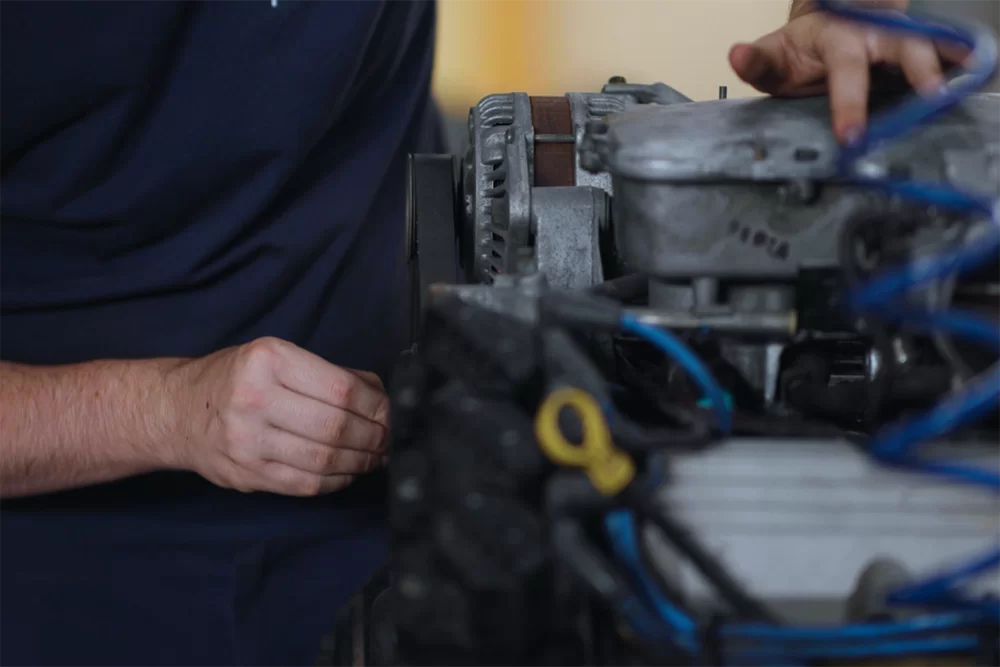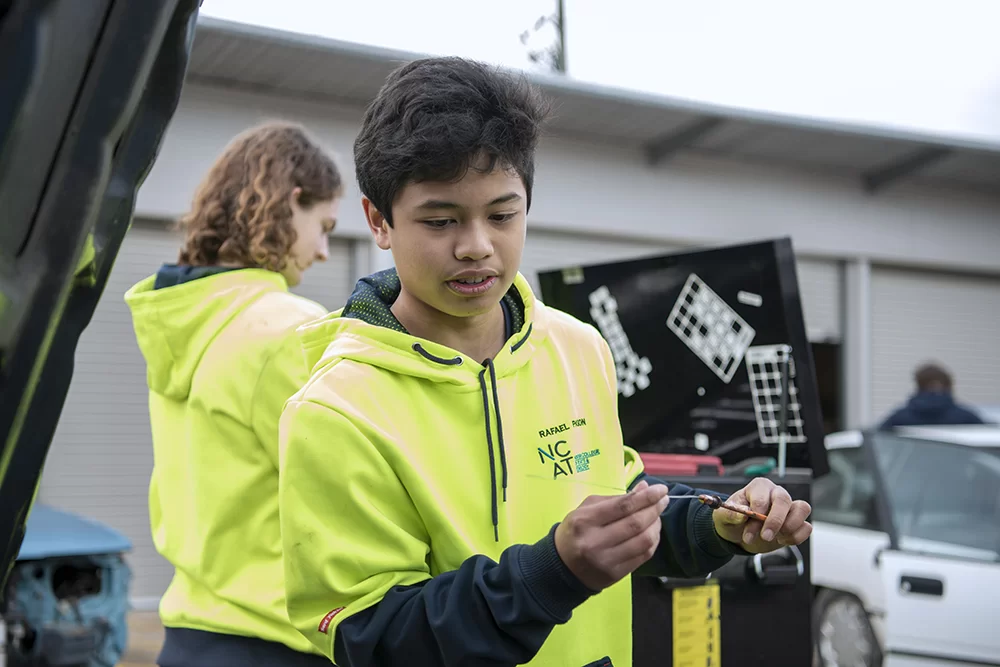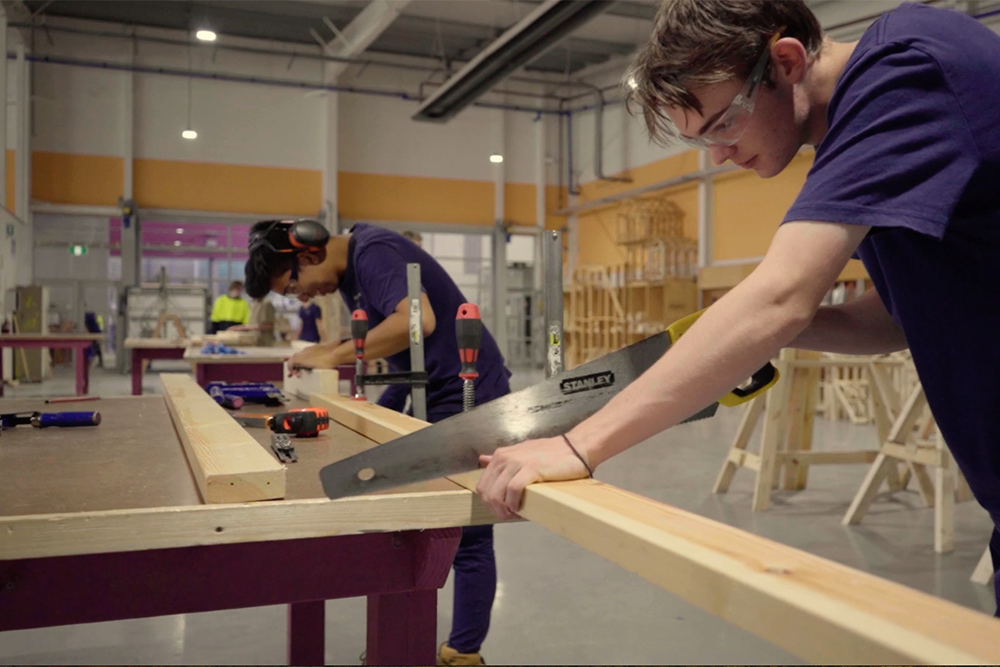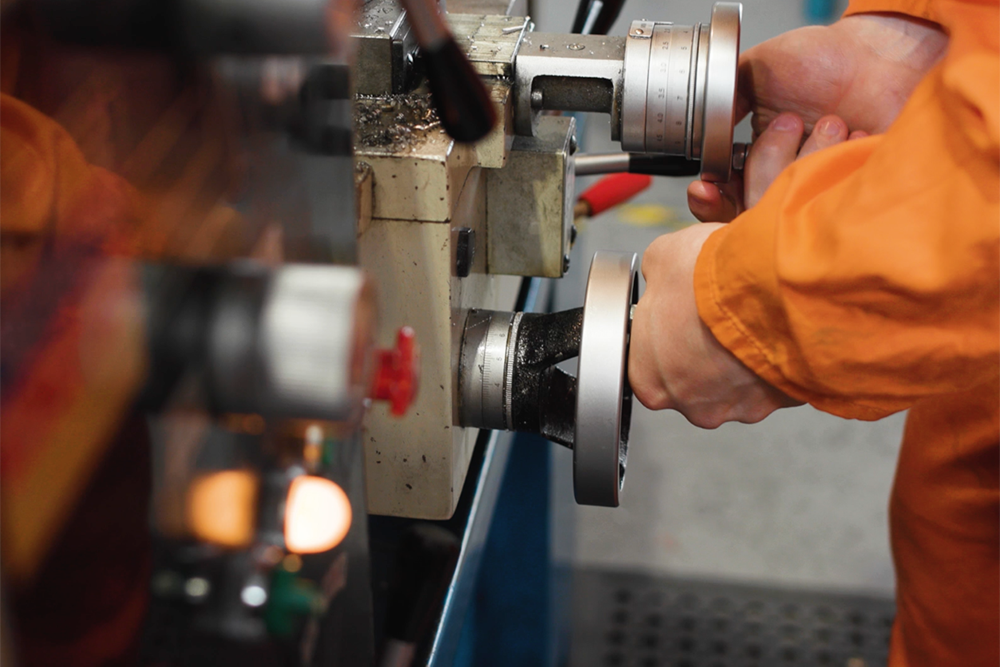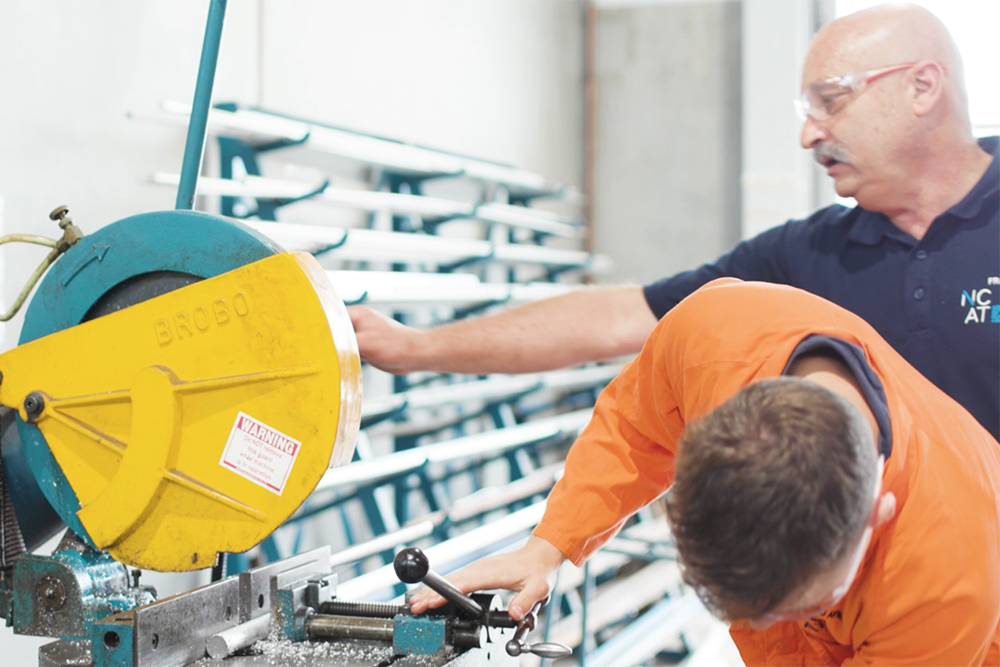Recent years have seen a shift in industry demand for fields such as engineering, manufacturing, automation, control technologies, mechatronics, electrotechnology, robotics, and energy management.
TestimonialsAnh (Kitty) Chau (Engineering Student)
“I want to do architecture when I'm older. At the end of the two-year course, we get a certificate saying that we've completed our engineering studies and it's just something else to add to my portfolio for university or entering the workforce.”
TestimonialsMichael Stapmanns (Engineering Student)
“Thanks to my experience at NCAT I was finally able to decide what direction to take and that engineering was what I wanted to do. My results in this course, thanks to the terrific teachers and learning environment at NCAT, gave my ATAR score a big boost…there was a clear link between theory and practice.”
TestimonialsDaniel Knot (Head of Department, Technology)
“A student can come here for three years: years 10, 11 and 12. They can do between four and five different certificates so that by the end of it they will definitely know what they want to do.”
TestimonialsAnh (Kitty) Chau (Engineering Student)
“Our engineering teacher used to help build and design planes for Boeing and when we found out we asked, “What are you doing here”? He replied, “I come here just for you guys.”
(
1 /
5)























